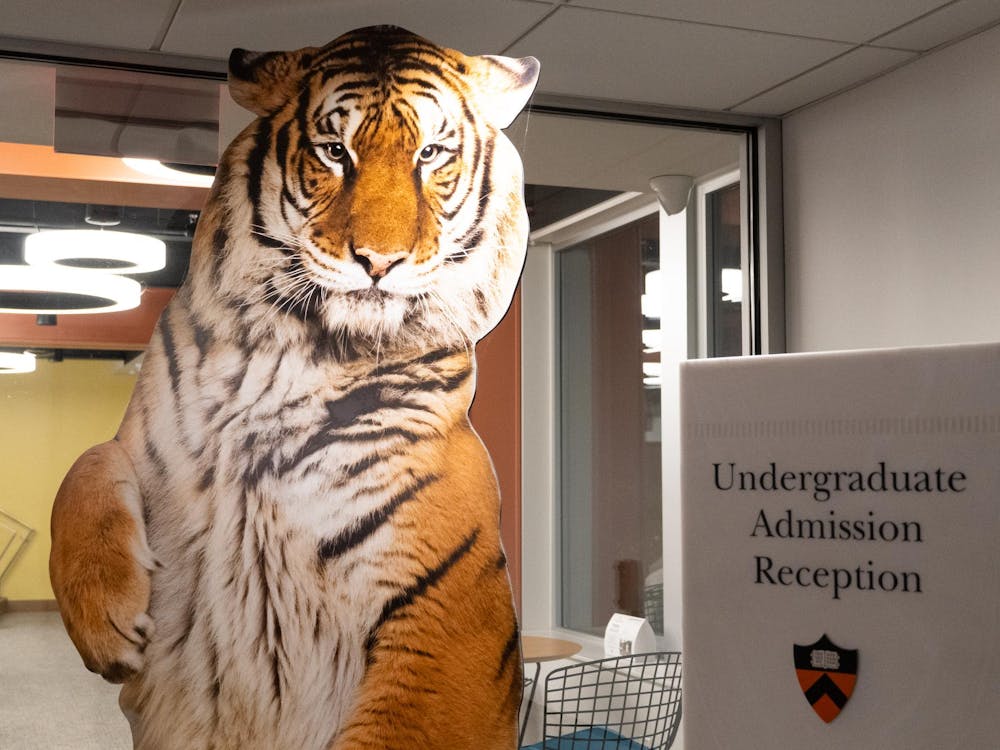Until this year, she taught a freshman seminar titled FRS 151: “How the Tabby Cat Got Her Stripes” or “The Silence of the Genes,” and this semester she is co-teaching WWS 354: Modern Genetics and Public Policy with history and Wilson School professor Keith Wailoo. Tilghman has also taught a two-week module on fruit-fly development in MOL 214: Introduction to Cellular and Molecular Biology and advises senior theses.
Tilghman is considered a leader in her subfield and participated in cloning the first mammalian gene while working at the National Institutes of Health. She began teaching at Princeton in 1986 and was named the founding director of the Lewis-Sigler Institute for Integrated Genomics in 1998. In 1996, Tilghman won the President’s Award for Distinguished Teaching.
Current and former students of Tilghman expressed surprise at her resignation but noted they were glad that she was reentering full-time teaching, which is her passion.
Ricky Silberman ’13, whose independent work has been advised by Tilghman, said she is probably excited to return to the classroom.
“She’s done her part for the University in terms of being president, and now what she really cares about is the students and going back to teaching,” Silberman said.
Nikhil Basu Trivedi ’11, another one of Tilghman’s advisees, said that, despite her busy schedule as president, Tilghman still met with him every week during his senior year and provided extensive feedback on his thesis.
As a professor, students said Tilghman personally attended to individual students both in and out of the classroom. Gita Gnanadesikan ’14, who took Tilghman’s freshman seminar two years ago unsure of the larger research questions within the field of genetics, is now contemplating a career in the field.
“[She] did a really good job both of explaining the material and getting us to think about the questions and research,” Gnanadesikan said.
Suchana Costa ’14, who also took the seminar, described how Tilghman was heavily invested in the success of her students despite her continuing duties as president. After struggling in the class, Costa said, Tilghman set up a meeting with her and reassured her that she was not the only one having a hard time. When Costa said she didn’t have time to meet with Tilghman during her office hours, Tilghman arranged to meet with her on Sunday evenings, where they reviewed assigned science articles together before class.
“It was really meaningful for me that she would take time out of her super busy schedule to meet with me over materials and make sure I understood it,” Costa said.
Tilghman also gave her advice outside of class. “After I was done with her class, she helped me figure out my schedule for freshman spring ... I feel like she tried to get each of us personally and outside of class too,” Costa added.
Gnanadesikan noted that Tilghman evolved into a mentor, writing a letter of recommendation, giving her feedback on proposed research topics and suggesting professors with whom she could collaborate.

“I am amazed at her ability to still invest in students and make connections,” Gnanadesikan said.
Ajibike Lapite ’14, who was in Tilghman’s MOL 214 module, said that Tilghman “makes the course like a narrative, which is interesting and also very helpful for the topic we were covering.”
“As soon as she started speaking, it was so obvious that she loved biology,” Christian Rivera ’14, another student in the module, said. “Every time she spoke about a certain topic, she would smile and be excited about it and talk about her research and everything she’s done in the past. It truly showed that teaching and biology were her first loves. That was very clear.”
Rivera noted that part of his admiration for Tilghman stemmed from her position as a pioneering female scientist and president in the Ivy League.
“She did so much for us, and we know that she could do so much more as president, so it’s sad knowing that she will retire from her position,” he said.







